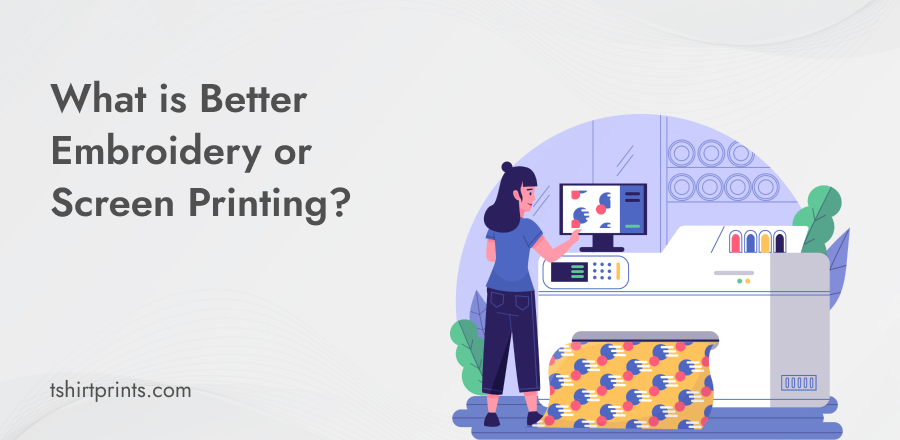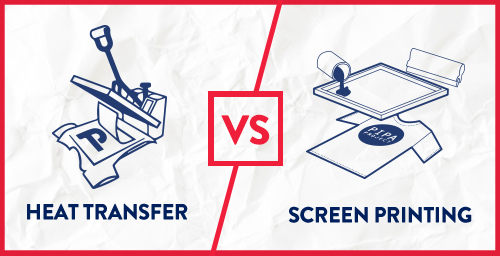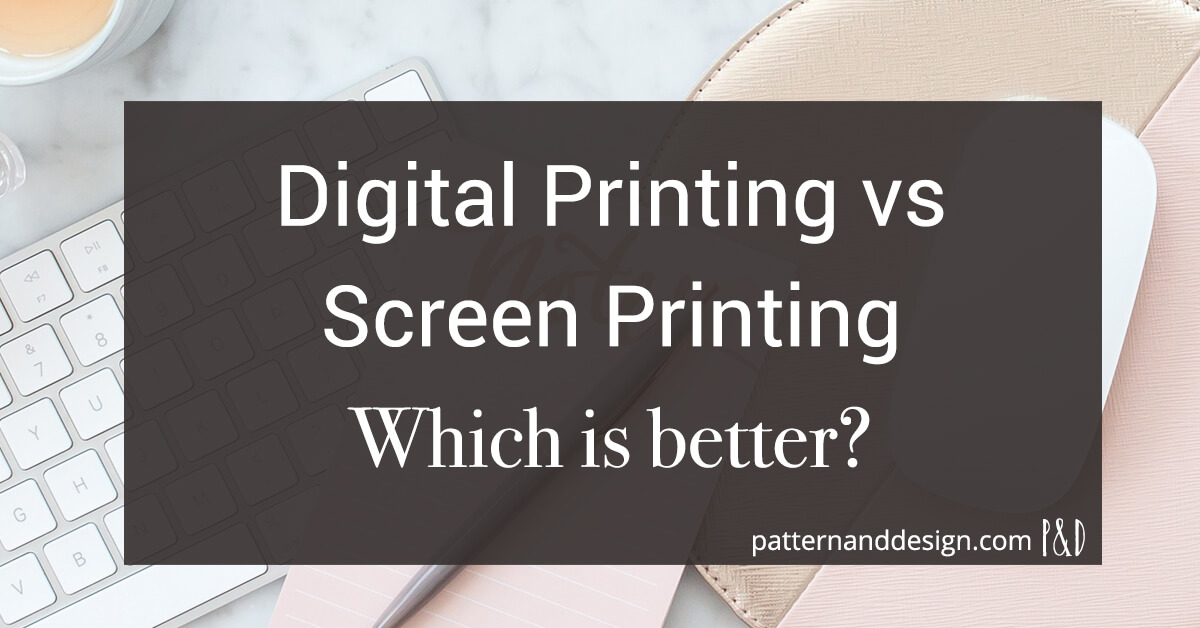Tx Tees for Beginners
Tx Tees for Beginners
Blog Article
Getting My Tx Tees To Work
Table of ContentsTx Tees for Dummies9 Simple Techniques For Tx TeesSee This Report on Tx TeesTx Tees - An OverviewThings about Tx TeesThe 8-Minute Rule for Tx TeesA Biased View of Tx Tees
That brings your total to about $1,900 prior to tax and shipping. Build up other costs, like the variety of energies it takes to run the store and the expense of ink and emulsion per layout. custom t-shirt design. Take the print below. This is a one-color image, so the price of ink per t shirt is around 20 cents.The solution must only be a few cents considering that you 'd only require to coat one screen for this job. Normally, printers try to make up to 45% revenue on a print task.

With DTF, you can print a handful of t-shirts, or just one. Make use of the very same calculator as the section above to compute just how much revenue you 'd make utilizing DTF transfers. Compare the costs and earnings to whichever technique speaks best to your arrangement and procedure. Both screen printing and DTF have their niches on the planet.
The Greatest Guide To Tx Tees
The most effective means to know? Ask around and see what printing shop like your own are doing. t-shirt printing. Attempt both out and see which you like far better
When you're selecting what kind of printing method to use for publishing your artwork styles on your garments, it's crucial that you understand the differences between these 2 strategies so you can optimize outcomes while reducing expenses. Display printing is one of the most generally made use of strategy for publishing designs on textiles.
DTG printing is also called spot or direct to garment printing since it publishes only what is required rather than making a display as screen printers do. https://pxhere.com/en/photographer/4221044. Display printing works by screen filler squeegee display printing ink screen mesh screen, after that moving the picture to garment utilizing heat and/or pressure
The DTG printer utilizes unique dye-sublimation inks that are used into a pre-designed image by an electronic printing system. The inks end up being part of the material, permitting vibrant shades and exceptional information. It's also called place or straight to garment printing since it publishes just what is needed rather than making a screen as display printers do.
The Main Principles Of Tx Tees
First, it's much faster - you can print a fullcolor picture in mins, in contrast to hours for screen printing. Second, there's no established time or costs involved - you can print any type of design you such as, without having to create a screen initially. Third, there's no waste - because screen printers display print one layout at a time, they need to screen each color separately.
The paper is very expensive and can only be used as soon as. Once it's published on, it has actually to be thrown out. - The first acquisition cost is less than the upfront investment of DTG printers- You can print multi-color layouts one display each time as opposed to needing to print each color separately like DTG printing.

Our Tx Tees Statements
Instead of utilizing screen mesh as display printers do, dye sublimation printers use laser technology to move your pictures onto garments or paper. A heat process transfers the color from its solid-state straight right into the gas stage which subsequently integrates it onto textile substratums when they are quickly heated to high temperatures under high stress.
Sublimation printing is eco-friendly. It makes use of less water than screenprinting, and due to the fact that it doesn't involve using unsafe solvents, it's risk-free for all sorts of clothing. The dye sublimation inks are additionally odor free when healed, unlike display printers that use damaging chemicals during the screen printing procedure that leave an undesirable smell.
They additionally save money on costly devices like direct exposure units considering that dye sublimation printers do not require a UV exposure system or a flash remedy oven that is generally made use of in display printing (custom screen printing). What is direct to garment printing (DTG Printing)? DTG printing is an electronic screenprinting process that publishes directly onto fabric utilizing specialized inkjet printers
Excitement About Tx Tees
DTG printing uses lots of advantages over conventional screenprinting, consisting of the ability to print photo top quality photos, higher color vibrancy, and the ability to print layouts on darker materials. DTG printers work by warming the fabric ink up until it becomes a gas. The gas after that permeates the fabric, bonding with the fibers to create a permanent print.

Screen printers just prepare their display then start publishing until they run out of product or ink.- There is a vast array of skilled screen printers around the globe, which can be useful for novices. - It's a slower procedure - display printers typically need to wait for the ink to completely dry before they can print the next shade- Display printers need hands-on labor, so there's a higher understanding contour and it takes longer to create a high-quality layout- Display printing isn't as exact as DTG printing, so you may get some "blood loss" of colors from one part of the photo onto one more if not done properly.
Excitement About Tx Tees
Nonetheless, rather than utilizing display mesh as screen printers do, dye sublimation printers use laser innovation to move your pictures onto garments or paper. A warmth process moves the dye from its solid-state directly right into the gas stage which in custom screen printing turn merges it onto textile substrates when they are quickly warmed to high temperature levels under high stress.
Sublimation printing is environment-friendly. It utilizes much less water than screenprinting, and since it does not involve using hazardous solvents, it's secure for all sorts of apparel. The dye sublimation inks are also unsmelling when healed, unlike screen printers that use dangerous chemicals during the screen printing procedure that leave an undesirable smell.
They also save money on expensive tools like direct exposure devices because dye sublimation printers don't need a UV direct exposure device or a flash treatment oven that is commonly used in display printing. What is direct to garment printing (DTG Printing)? DTG printing is a digital screenprinting procedure that prints straight onto material making use of specialized inkjet printers.
Unknown Facts About Tx Tees
DTG printing supplies several advantages over standard screenprinting, including the ability to publish photo top quality pictures, greater color vibrancy, and the capacity to publish styles on darker fabrics. DTG printers work by heating the fabric ink until it turns right into a gas. The gas after that permeates the textile, bonding with the fibers to develop an irreversible print.
Report this page